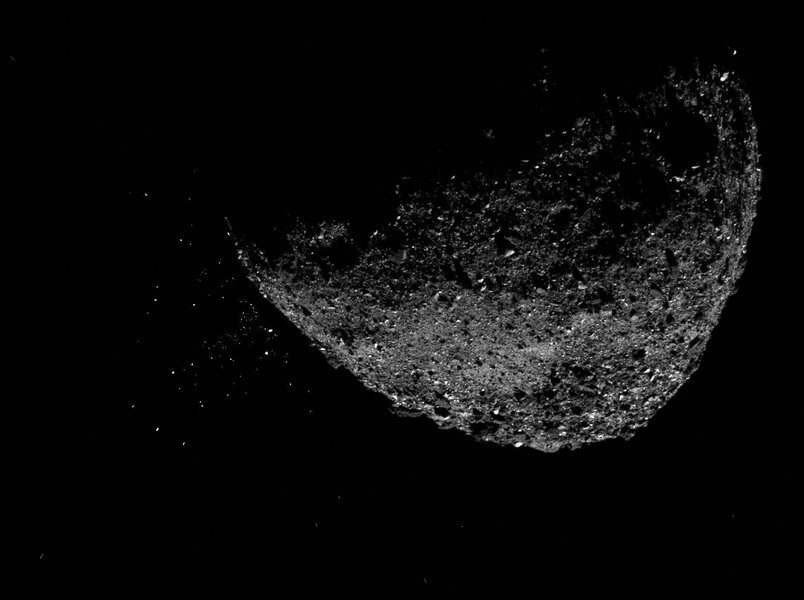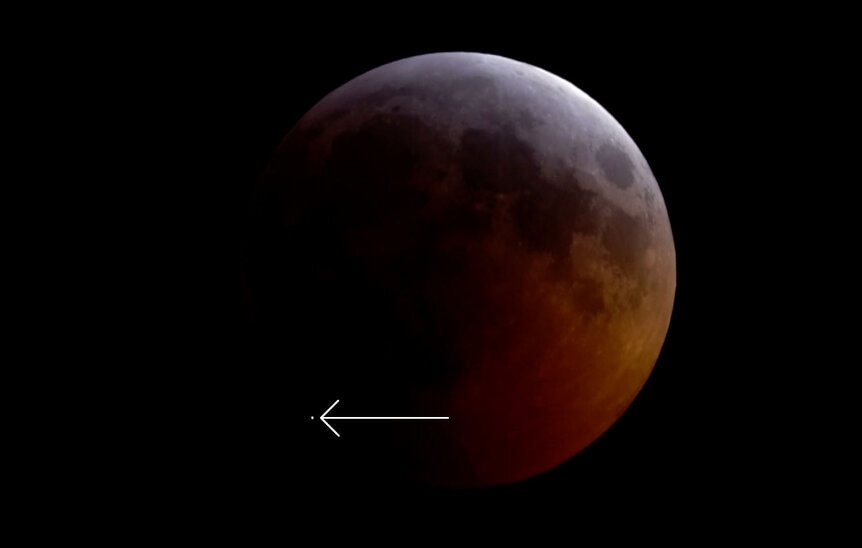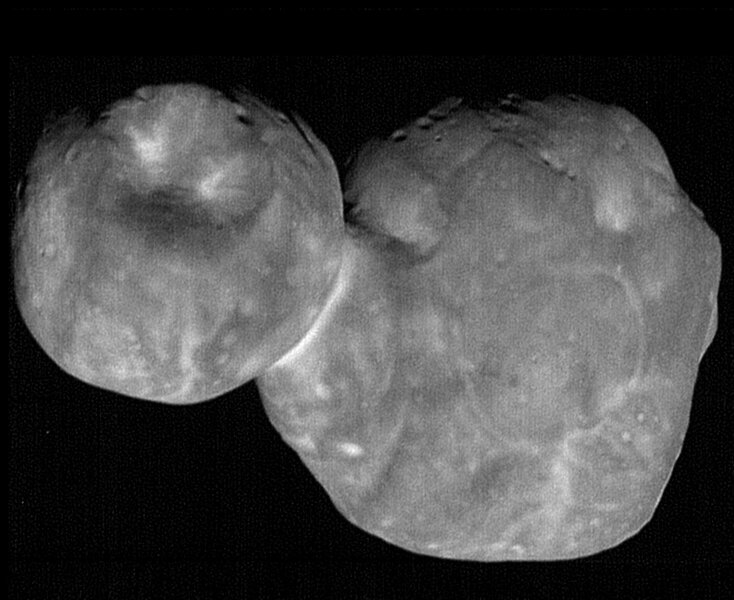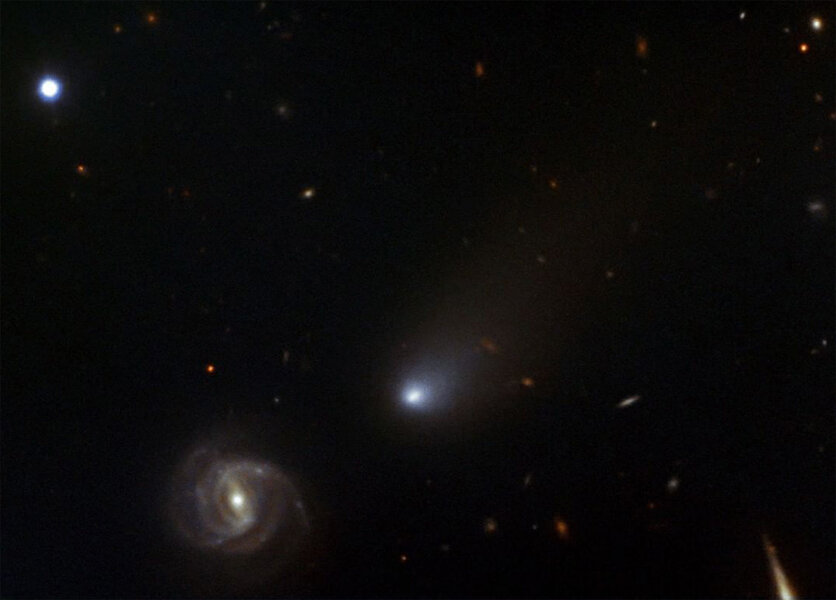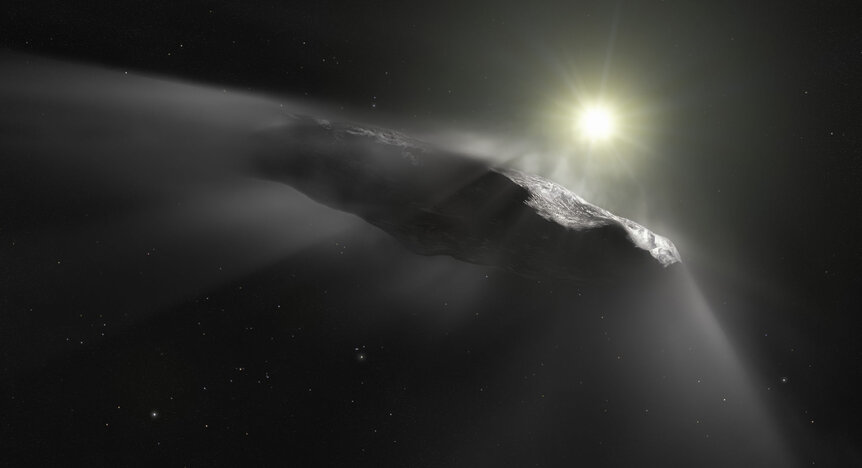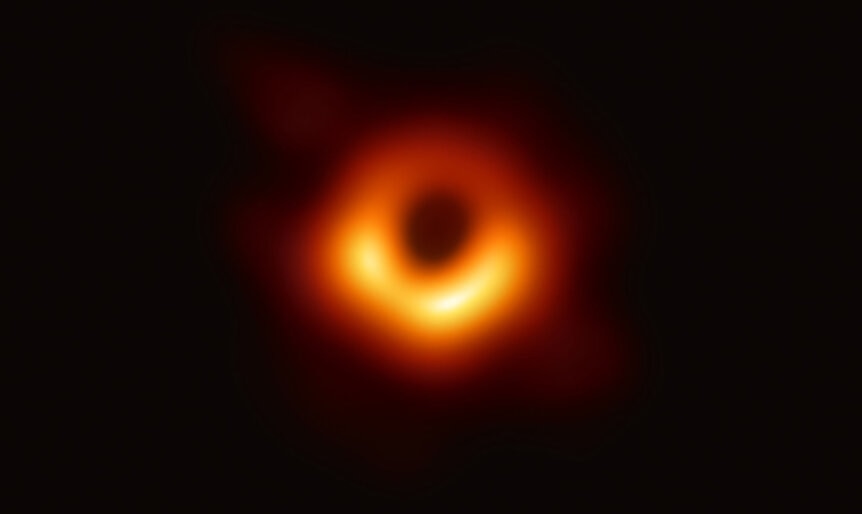Create a free profile to get unlimited access to exclusive videos, sweepstakes, and more!
The top 5 astronomy stories for 2019

It's been an interesting year for astronomy news.
I could start every year-end article with that line. The sheer number of telescopes and spacecraft poking and prodding the Universe practically guarantees that we'll see a few breakthroughs — or at least significant jumps — every few months in one field or another.
As I went through the articles I've written and the press releases I've received these past 12 months, it wasn't too hard to find the brain-grabbing headlines, as you'll see below. But I was also struck by how much solid progress is being made in astronomy (and other sciences of course) that weren't big banner stories. Some were about incremental but important discoveries, some about missions that ended, and some that were just interesting and worth reading about.
Because of that, this isn't really a Top Five list. It's more of a "here are a lot of cool stories, and five of them I'll bring special attention to, but hey you should look at a bunch of others as well!"
As for the five, three of them are close to home, one of them is close to home but hearkens to distant unknown realms, and the fifth is about as not close to home as you can get, metaphorically at least.
5) Bennu is spitting rocks
OSIRIS-REx is a NASA mission that arrived at the 500-meter-wide asteroid Bennu on the last day of 2018. The goal of the mission, among other things, is to survey the surface, do mineralogical studies, and grab some samples that it will eventually return to Earth. The overall goal is to understand asteroids better, what they're made of, their structure, what their environment is like.
Bennu is not a solid monolithic rock, but is instead a rubble pile, a big collection of rocks held together by their own meager gravity. We knew these existed, but we knew very little of their behavior up close. And that's why it was a pretty dang big shock to find out that Bennu is active: It's spitting small rocks into space!
This was unexpected, to say the least. But the images make it pretty clear: Rocks up to 10 centimeters in size were being shot out into space at speeds of up to 3 meters per second! Given that Bennu's surface gravity is something like 1/100,000th of Earth's, that's an appreciable velocity. Some of these bits orbited the asteroid and fell back, but others escaped entirely.
A paper just published posits three mechanisms that might cause this: rocks fracturing due to thermal stress between the hot days and frigid nights on the asteroid's surface, water outgassing from phyllosilicates (clays) in the rocks applying pressure to smaller bits and ejecting them, and micrometeorite impacts dislodging material and blasting them away. It's not clear which of these three is the culprit, or if they're working in some combination.
Asteroids, it turns out, are pretty surprising in many ways; they're certainly not just dead rocks floating around the Sun. Perhaps OSIRIS-REx will get more info on this weird behavior, since it'll be hanging around Bennu until March 2020. Hopefully it'll find other strange stuff, too.
Noteworthy related articles: The Japanese spacecraft Hayabusa2 has left its own target asteroid Ryugu behind, and is heading back to Earth (arriving in 2023) with samples. It got them by firing a cannon at the surface, and also dropped four rovers down to land on the asteroid as well.
4) The Impact Seen 'Round the Earth-Moon System
On 17 January, 2019, the Moon slipped into the shadow Earth casts into space, creating a total lunar eclipse.
While beautiful, these events are relatively common, and of limited scientific potential. But this one threw a monkey into the wrench: While millions of people watched the event either outside for themselves or in the many livestreams, a small asteroid slammed into the shadowed lunar surface, creating a fireball easily visible in small telescopes!
It was later determined that the interplanetary debris was a 45-kilogram rock roughly the size of a beach ball, and it hit the Moon at a speed of about 61,000 kilometers per hour. The resulting release of energy was equivalent to the detonation of about 1.5 tons of TNT, carving out a crater something like 10–15 meters wide. Oof.
Impacts happen on the Moon pretty often, but they're not usually this well characterized; it helped a lot that so many telescopes were trained on the Moon at the time, so that high-quality video could be analyzed. It also happened in the darkest area of the eclipsed surface, so the contrast was high.
My own connection to this impact is that I was out in my driveway doing a live feed on Periscope with my cell phone attached to a small spotting telescope. I was having a hard time keeping the 'scope aimed and the phonecam focused, and I was adjusting the setup right when the impact occurred. I missed seeing it by seconds!
Lesson learned. Next time I'll do more prep and use my big ‘scope, which is easier to control and track. But I'm honestly really glad so many people got to see such a rare and cool event.
Noteworthy related articles: A meteorite hit a house in Uruguay, and the comet 42/P Wirtanen was impacted by some debris that caused it to outburst. Also, getting to the Moon isn't easy; India lost a lander, as did Israel, though China landed a rover on the far side which was seen by LRO from orbit.
3) Our first close-up look at a Kuiper Belt Object
The New Horizons spacecraft zipped by Pluto in July 2015, returning amazing detailed images and data of the tiny, icy world. But this was a flyby, and New Horizons continued on into the dark after the encounter.
Projecting its path into the future, astronomers looked for more potential targets for the spacecraft, and discovered 2014 MU69, what's called a Kuiper Belt Object, an icy rock that orbits the Sun past Neptune. The mission was given the green light, and it fired its engine to set course for its frigid destination.
The flyby was on 1 January 2019 (so it counts for this list!), and due to the distance — 6.6 billion kilometers from Earth — the data transmission rate was low, so we had to wait almost two months to get the high-res images. But it was so worth that wait.
This is a mosaic taken from a distance of about 6,600 km, when the spacecraft was still 6 minutes from closest approach. The shape wasn't unexpected; previous observations had indicated it was double-lobed or possibly binary. MU69 — now officially named Arrokoth — looks like a contact binary, with two separate objects touching at a single neck region. Weirdly, it looks like the two lobes are actually very flat, which is surprising.
New Horizons is still out there, moving away from the Sun. It's possible it may visit another KBO, but its power source is good for another decade or two, so it will measure the environment of the outer solar system and provide scientists with data for some time to come.
Noteworthy related articles: Where do the big moons of KBOs come from? and a new idea about how one of Neptune's small weird moons formed.
2) Alien Invasion
In 2017, astronomers discovered an object moving so rapidly through our solar system that it must have come from another star. Called ‘Oumuamua, it was the first confirmed interstellar visitor ever seen. The question naturally arose: How often do these things pass through?
In late 2019 we got another clue: A second object was discovered, also moving so rapidly there was no way it could've come from our own solar system. Another alien visitor was confirmed.
Named 2I/Borisov (the second interstellar object ever seen, discovered by amateur astronomer Gennadiy Borisov), it was immediately pounced upon by observatories across our planet (and above it). Unlike 'Oumuamua, which was discovered after it had passed the Sun and Earth and was on its way out, 2I/Borisov was discovered while still on its way in, which was critical: For one thing it gave astronomers more time to study it, and for another we could watch it approach the Sun, warm up, and become active.
Sure enough, it was seen to have a gaseous head around it, and a tail, too. As I've written many times before, the weirdest thing about 2I/Borisov is just how ordinary it is. Except for its exceptional speed, it looks exactly like any run of the mill solar system comet! 'Oumuamua was pretty weird; it appears to very elongated, and no outgassing was directly seen from it. It's unclear why 'Oumuamua is so odd.
But 2I/Borisov? It has the same molecules and elements in it as solar system comets, and it behaves in the exact way you'd expect our local artisanal comets do. Remember, this comet formed around another star! Something happened to eject it from its home (maybe a close encounter with a giant planet) and send it into deep space, traveling who knows how many light years — hundreds of trillions of kilometers, certainly — before zipping past us. Yet for all that, it looks like a twin of any comet of our own.
I love this! It shows us that the basic ingredients, the basic conditions, of environments around other stars are much like they are here. If, like me, you wonder if other Earths dot the sky, if there may be other beings out there looking up in curiosity and awe, then the mundanity if this object is the most exciting thing about it.
2I/Borisov has already passed its closest point to the Sun, and will be nearest Earth late in December (though still nearly 300 million km away). It'll be months before it's too far away to see, so there will be many, many more observations of it to come. And the other lesson here is that it's only a matter of time before we spot more voyagers like it. What will we learn from them?
Noteworthy related articles: Could the weird behavior of Boyajian's Star be due to an evaporating exomoon? and exocomets are raining down on Beta Pictoris.
1) Looking down the edge of infinity: An image of M87's supermassive black hole
Nothing in astronomy captures people's attention and wonder like a black hole. Capable of utter destruction yet the engines of the formation of stars in galaxies as well, everything about them is fascinating and weird.
Yet for all the articles written about them, all the observations made of them, all the theoretical calculations made about them, we still have never actually seen one. And you can't. There's a reason we call them black holes.
But we can see their impact on the environment around them. Some are actively feeding, matter piling up in huge disks around them before falling over the cliff of infinity, and that material is extremely hot, glowing across the electromagnetic spectrum. The problem is that even though these disks can be light years across, they're so far away from Earth that distance shrinks them to irresolution.
… until now. Over the course of four nights in 2017, an array of seven telescopes across the planet were aimed at the heart of M87, a galaxy 55 million light years away in the constellation of Virgo. It's the nearest active galaxy, one with a supermassive black hole equal to 6.5 billion times the Sun's mass, and one that is accreting vast amounts of material. The observations were so difficult and complex it took nearly two years to process them, but when the results were released in April 2019, people across the planet gave out a collective gasp:
That picture is amazing. It's the actual image of material circling the black hole some few dozen billion kilometers out … and of course there's that gaping dark hole in the center. That's not the black hole itself! It's where material orbiting the black hole is so close that the light from it can actually orbit the hole a few times before falling in. That region is called the photon sphere, and is about 2.5 times bigger than the event horizon (the point of no return for anything getting too close to a black hole; for M87 the event horizon is about 40 billion kilometers across, roughly eight times the distance of Neptune from the Sun). This area is sometimes called the shadow of the black hole, but I prefer to think of it as the silhouette. Either way, it's just an analogy. But it's where light cannot get out, so it looks like a donut hole.
The image closely matches what we expected to see from a close-up image of a black hole. And it's only the first of its kind: The Event Horizon Telescope, as the array is collectively called, will be aimed at more soon, including Sgr A*, the supermassive black hole in our own galaxy. At just 26,000 light years away it's much closer, but far less massive and therefore smaller; coincidentally the two black holes appear to be about the same apparent size our sky. I can't wait to see that one!
And with this new powerful technology, we'll be seeing a lot more from this array. We've known about black holes for a long time, but there's still a lot about them we don't understand. This image, and the ones that will no doubt follow, will help us wrap our heads around these objects that literally wrap space and time around them.
Noteworthy related articles: Our local supermassive black hole erupted and we don't know why, it also ejected a star right our of the galaxy, and how astronomers measured the staggering 2.3 billion solar mass black hole in a galaxy 100 million light years away.
